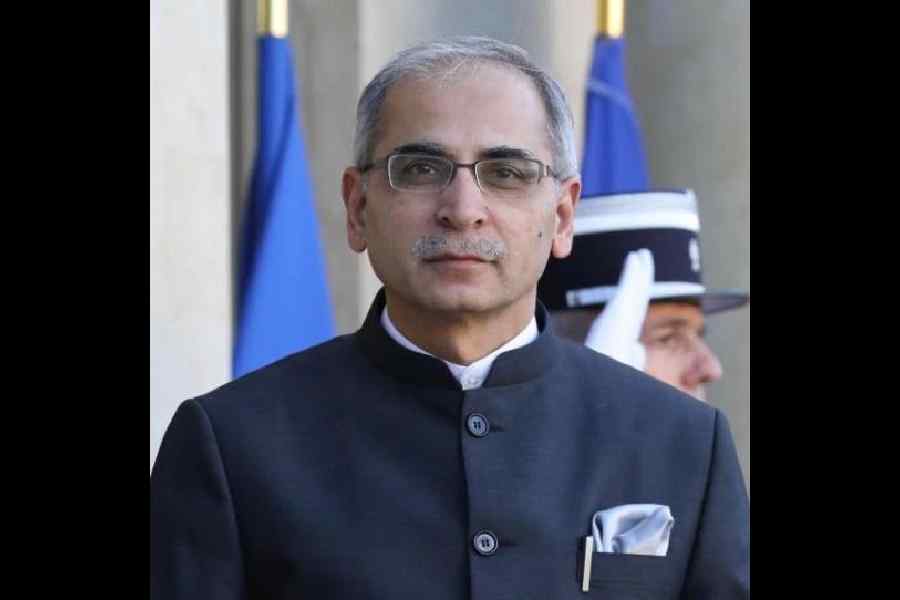|
|
When a painterly eye combines with the quill or pen, the outcome is quite striking, particularly in the narration of memoirs. Interestingly, though Indians started writing about their lives by the second half of the 19th century, hardly any appeared to be familiar with the paintbrush or pencil; at best, as a mandatory acceptance of the new visual medium of photography, a studio portrait of the author might appear as the frontispiece. On the other hand, to explore the Indian countryside and its growing urban areas with a paintbrush or early colour-pencils was not unusual for British civil servants, doctors and engineers; several combined this interest with photography, the latter often a requirement of their jobs. A handful of women — often skilled, amateur watercolourists — has left behind a rich legacy of memories brought alive by visual images. While Charlotte Canning inherited a tradition of combining memory with image from Emily Eden and Fanny Parks, she also embellished her writings with photographs. An accomplished photographer (in some of the handful that survives from the thousands she took), she emphasized composition, backdrop and overall effect.
In A Glimpse of the Burning Plain: Leaves from the Indian Journals of Charlotte Canning, the writer of popular history, Charles Allen, has put together engaging gleanings from the first vicereine of India’s paintings, journals and letters about her life in this country. In 1842, Charlotte Canning had been appointed Lady of the Bedchamber by Queen Victoria, an honour that meant that she had to wait upon the woman who was to become Empress of India. When, by the end of 1855, the Cannings were on their way by sea to India, where Charles was to become governor-general, Charlotte initiated a tradition of regular letter-writing to the queen that was to last for over five years.
If Charles did not find time to send dispatches to his sovereign — and apparently, this was quite often — Charlotte filled in with very detailed epistles. An appreciative Victoria wrote back, “I cannot tell you how thankful I am for your writing to me so regularly... your letters... are universally considered as the best that are received from India.” The Victorian age was known for letter-writing and the keeping of journals and diaries — the queen had kept a diary from the age of 13, and the near-daily recording of her long life filled over a hundred volumes. Even though it was not until well into the 20th century that diarists ventured into the personal in their writings, it is not as though their predecessors wrote in a totally sanitized, angst-free manner. Charlotte Canning was the epitome of the upper-class British woman — but even she did not keep her feelings at bay. Of course, there is no mention of her husband’s inamorata, left safely behind in England, but there are enough interesting comments and asides for the reader to develop a certain admiration for this talented and dutiful woman’s prescience.
While in Madras, Charlotte has her first taste of Anglo-Indianisms — they were fed “tiffin instead of luncheon” — and an encounter with missionaries left her with a distinct sense of distaste as she found their “phraseology and manners... most disagreeable”. Charlotte knew that their wards, too, though adept at parroting what they had been taught, “did not pretend to or believe what they said”, in the words of her journal. Though she was soon to live in one of the grandest houses the British built in India — Government House in Calcutta — and do it up as a stately home, she could not but find the way of life of her compatriots absurd: “treated with a pomp and circumstance unknown to anybody in England”. Waited on hand and foot, their horses and dogs too had their own “valet de chambres”. To the queen she wrote on the safe subject of the beauties of Indian women and as “photography is making good progress in India... I hope to send some specimens to your Majesty.”
If Calcutta did not endear itself to Charlotte (“there are deficiencies in Calcutta which no one ever told me of, but which are enough to deter any one from ever coming voluntarily to live here”), Barrackpore (Barrackpur) more than made up for its shortcomings. Sixteen miles up-river, the much more modest abode was nevertheless one where Charlotte felt clearly at home even though she found the plan of “an Indian room odd” with its many doors and windows. The garden was too English for the lady’s liking and for her, the “jungly ground outside” the compound was much more appealing. Charlotte’s somewhat quirky sense of humour led her to inflict on visitors a bumpy elephant ride from the governor-general’s ample stables — it had “a wonderfully reassuring effect upon people who arrive very much alarmed at us”. While she did not explain further, perhaps she meant that a visit to the gubernatorial home was daunting to many. Soon the ubiquitous chintzes and armchairs were on display, walks by the river laid out and, in the evenings, regimental bands were in attendance. After a period of hibernation, Charlotte’s sketch-pad and photographic equipment made their appearance; she rode down pathways and found “the wonderful beauty of detail — all the tangle, & great unbroken leaves & stems, all lovely to draw”. It could only be her artist’s eye which saw trees that were “like green tinsel, or green flies, or enamel”.
All this, of course, was the proverbial lull before the storm as the Cannings could not have come to India at a more tumultuous time. During 1857-8, Charlotte played the role of diligent reporter, keeping the empress informed of the chilling events. Commenting on the greased cartridge issue, she explained in a letter that “sepoys are the most tractable good people... but any fear that religion or caste shall be tampered with, can always excite them to every possible folly”. In response, a clearly apprehensive queen wrote of the need for the “greatest care... to be taken” not to interfere with the religion of a “fanatical people — very strictly attached to their religion”. Details of the siege of the Lucknow Residency, of women held and killed at the Bibighar in Cawnpore (Kanpur), and the repatriation of survivors to Calcutta were conveyed in restrained detail to the queen. In her journal, Charlotte wrote in irritation with the panic that had beset Calcutta; as “revolvers are bought by everyone” and there was talk of forming regiments comprising able-bodied citizens, such behaviour was clearly “absurd” for “there is not the least cause of fear here”.
As excesses against the sepoys spread, Lord Canning wrote in one of his rare letters to the queen of the “rabid and indiscriminate vindictiveness abroad even among many who ought to set a better example”. Though he was soon disdainfully referred to as ‘Clemency Canning’ by sections of a jingoistic press back home, the queen’s long letter of support reassured him. Punishment was to be severe, she averred, but the faithful were to be rewarded and women, children and old men spared — or else, as she pragmatically wrote, “how could we expect any respect or esteem for us in the future?” The Cannings survived the storm, and when the viceroy decided to move up-country so as to have a more hands-on view of the post-1857 situation, Charlotte’s journal and letters recorded the varied terrain and the people they met — and even a hair-raising 30-day trip in a jhampan (“John pons”) from Chini “on the borders of Thibet” to Mussouri (Mussoorie).
In early 1861, Charlotte reluctantly accepted that the Cannings were to stay on in India a while more; in November, she returned from Darjeeling with what was diagnosed as Purnea fever. Her husband, who had, on more than one occasion, publicly humiliated Charlotte, was now all devotion, barely leaving her side. And when she died in his arms on the 19th, he lost no time in ear-marking a quiet, riverside spot in the Barrackpore property for her grave. A neglected replica of her tomb stands in Calcutta’s St John’s Church, the long shot here (from Christopher Taylor and Soumitra Das’s White & Black) — by the photographer, Christopher Taylor — highlighting its forlornness.
Yet, Lady Canning lives on in the ledikeni — a favourite Bengali sweet introduced by Bhim Nag for the vicereine’s birthday. The enterprising confectioner had created a space in the Bengali palate for the lady, who, by the end of her life, had developed a strange attachment to the city. On return from a tour, she wrote in her journal that though the residents looked “parboiled”, she was “quite enchanted” to be back to one of Calcutta’s hottest Julys with a “sky of inky tint and an atmosphere like a wash-house”.












